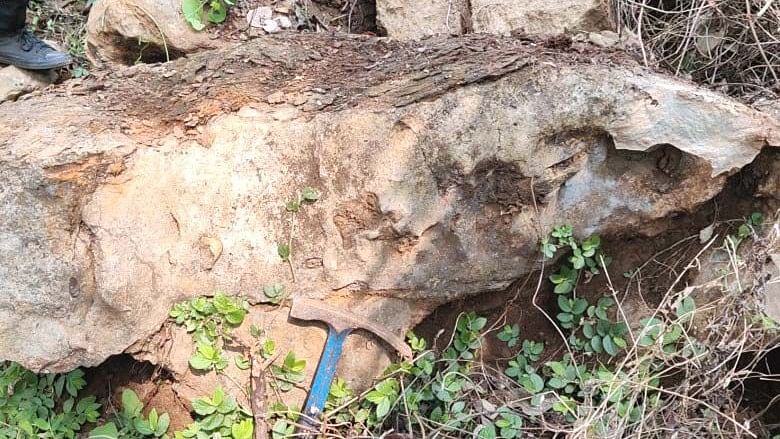
Whale fossil
Credit: Geological Survey of India.
Guwahati: Investigation inside a limestone block in hilly Meghalaya's South Garo Hills led a team of Geological Survey of India (GSI) experts to stumble on marine whale fossils, which is believed to be a significant paleontological discovery.
The vertebrate bone fossils were found embedded within the grey to bluish grey limestone horizon of the Siju Limestone Member, in Chokpot area in November last year.
"The present study points to first possible occurrence of Whale fossils from Meghalaya and expands their Indian geographical range from Western India (Kutch and Jaisalmer), northwestern Himalaya (Kalalot and J&K) and Subathu (Shimla in Himachal Pradesh)," the GSI experts, Firoze Ahmed and Debdatta Basu said in their report.
"The finding could significantly contribute to understanding the evolution and distribution of marine mammals in India, particularly during the Eocene epoch, a period known for the transition of whales from land to sea" the GSI says.
"The recovered bone fragments are elongated in shape and range from 5.1cm to 9cm in length with long and short axes diameters of cross section are 2.8 and 2.1cms, respectively. They have a distinct spongy and porous internal texture, indicating the presence of osteocyte-like structures. The preliminary bone histological studies through transmitted light reveals different parts of a fossilised vertebrate bone such as the bone cortex and central medullary cavity," it said.
The fossil site, part of the ongoing study under the Field Season Program, lies within the Paleogene sedimentary sequences of the Jaintia Group, which rest unconformably on the Assam Meghalaya Gneissic Complex (AMGC). The region's stratigraphy includes the Siju Limestone, a fossil-rich layer that has previously yielded evidence of marine life, including foraminifera and nannofossils, dating back to the Middle Eocene.
They, however, mentioned finding vertebrate fossil fragments in Tolegre area, about 40kms away, by a team of cavers during a cave expedition in February. "However, they are well-known from the western part of India and are of global importance."
The report said detailed taxonomic as well as further field examinations may add to the accuracy of taxonomic identification and their implications. "The current report on marine mammal fossils from South Garo Hills offers the potential of undertaking more in-depth research in order to better comprehend marine mammalian fossil occurrences in the less investigated places of Northeastern India," they said.